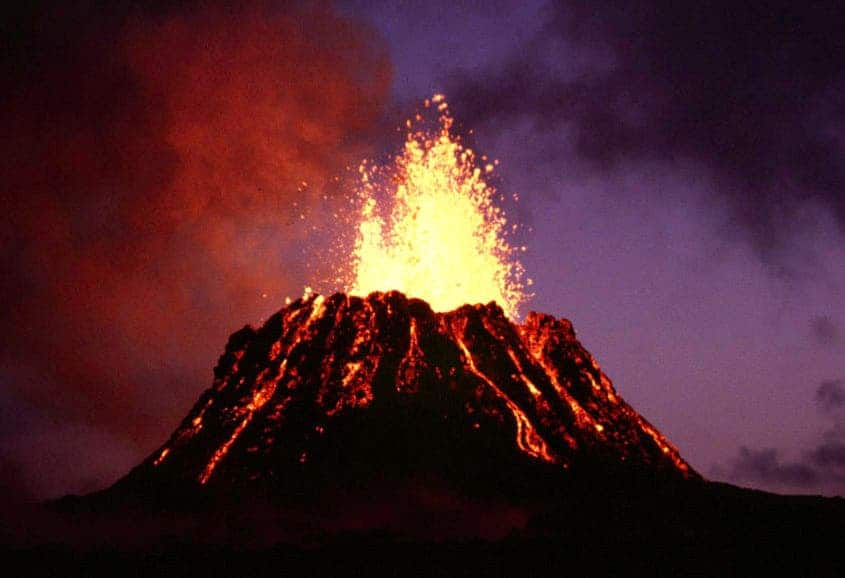The 2018 eruption of Mount Kīlauea in Hawaii was likely triggered by excessive and sustained rainfall in the region, according to a new paper from the University of Miami (UM) Rosenstiel School of Marine and Atmospheric Science.

Image credits USGS.
Such findings have implications for volcanoes around the world, not just those in Hawaii, as they suggest local precipitation patterns could have an important role to play in the timing and frequency of eruptions.
Just add water
“We knew that changes in the water content in the Earth’s subsurface can trigger earthquakes and landslides. Now we know that it can also trigger volcanic eruptions,” said Falk Amelung, professor of geophysics at the UM Rosenstiel School and coauthor of the study.
“Under pressure from magma, wet rock breaks easier than dry rock. It is as simple as that.”
The team shows that the eruption was preceded by prolonged and at times extreme, rainfall in the months leading up to the event.
Kīlauea is an active shield volcano, one of the liveliest volcanoes in all of Hawaii. On May 3, 2018, it started spewing lava nearly two hundred feet in the air, eventually covering over 13 square miles of the well-populated east coast of Hawaii’s Big Island. The unprecedented event destroyed hundreds of homes and only ended four months later, in September, when the summit of the caldera (the volcano’s top) collapsed in on itself.
The researchers used data from ground- and satellite-based stations from NASA, the European Space Agency (ESA), and the Japanese Space Exploration Agency (JAXA), to model rainfall patterns in the area before the event and, from that, estimate the fluid pressure within the volcano over time.
This pressure is, essentially, what drives volcanoes to explode. Magma itself may be molten-hot, but it is generally quite harmless if left to its own devices. What actually pushes it out of the volcano is the buildup of fluids — gas and liquids — in the enclosed space. These fluids typically seep out of the magma as they escape the depths of the Earth, and thus encounter lower pressures. It’s the same mechanism that makes a can of soda pop if you shake it before opening.
All in all, the team explains that fluid pressure was highest just before the eruption — this wasn’t surprising. But they also calculated that it was the highest recorded pressure value in half a century at this point, which they argue helped move the magma and caused the eruption. Their hypothesis would also explain why there was no widespread uplift (from gas building up beneath the surface) at the volcano in the months prior.
“An eruption happens when the pressure in the magma chamber is high enough to break the surrounding rock and the magma travels to the surface,” said Amelung. “This pressurization causes inflation of the ground by tens of centimeters. As we did not see any significant inflation in the year prior to the eruption we started to think about alternative explanations.”
This is the first time that this mechanism has been invoked to explain deeper magmatic processes. In support of their theory, the team notes that Kīlauea’s historical eruption record shows it was almost twice as likely to erupt during the wettest parts of the year.
And, if this process is at work here, it’s likely to also take place at other volcanoes, the authors add. If such a link between rainfall and volcanism can be reliably determined, it “could go a long way towards advanced warning of associated volcanic hazards,” according to Jamie Farquharson, a postdoctoral researcher at the UM Rosenstiel School and lead author of the study.
“It has been shown that the melting of ice caps in Iceland led to changes of volcanic productivity,” said Farquharson. “As ongoing climate change is predicted to bring about changes in rainfall patterns, we expect that this may similarly influence patterns of volcanic activity.”
The paper “Extreme rainfall triggered the 2018 rift eruption at Kīlauea Volcano” has been published in the journal Nature.


